Every once in a while an independent watchmaker or boutique brand comes along with something of truly unprecedented ingenuity. Once such piece is Cabestan’s Triple Axis Tourbillon, which was first presented at Baselworld 2015.
Boasting the fastest triple-axis tourbillon escapement in existence, as well as an unorthodox design and technical construction, the Cabestan Triple Axis Tourbillon is one for the books.
Now before I get into the watch, there’s something I have to get off my chest: I was pretty upset when the Cabestan’s Triple Axis TourbilIon didn’t make it through to the jury’s pre-selection of timepieces in the Grand Prix d’Horlogerie de Genève. I even voiced my opinion about this on Instagram as I was certain that the Triple Axis Tourbillon would at the very least make it to the finals.
Not only is it the fastest triple-axis tourbillon in existence, but it exhibits exceptional standalone design and technical construction in both the case and movement.
I guess at this level of “out-there” watches, you have to adopt a more skeptical “I’ll believe it when I see it” approach. I know I would.
How is it that a brand so unheard-of can create something so extraordinary?
Cabestan is as artisanal as an independent brand can get. Tucked away in the Vallée de Joux around an hour’s drive from Geneva, it is a small but vertical manufacture capable of conceptualizing, developing, and producing movements and watches in-house.
Lionel Betoux took the reins at Cabestan about three years ago with the ambition of making this obscure, artisanal manufacture into a worthy contender in the upper echelon of alternative watchmaking. In a short period of time, he has managed to create a renaissance of sorts for Cabestan, opening new markets and generating real demand by collectors who appreciate complicated, alternative watchmaking.
Thankfully, he has Eric Coudray leading the watchmakers and product development. Coudray is the mastermind behind such pieces as Jaeger-LeCoultre’s Gyrotourbillon. He also made Vianney Halter’s original Cabestan Winch concept into a functioning timepiece more than a decade ago.
Coudray is perhaps one of independent watchmaking’s best-kept secrets. While I don’t want to dwell too much on the past here, I will say this: Coudray is someone able to come up with both out-of-the-box concepts and make them reproducible, smoothly operating machines; something that sadly isn’t always the case in this segment.
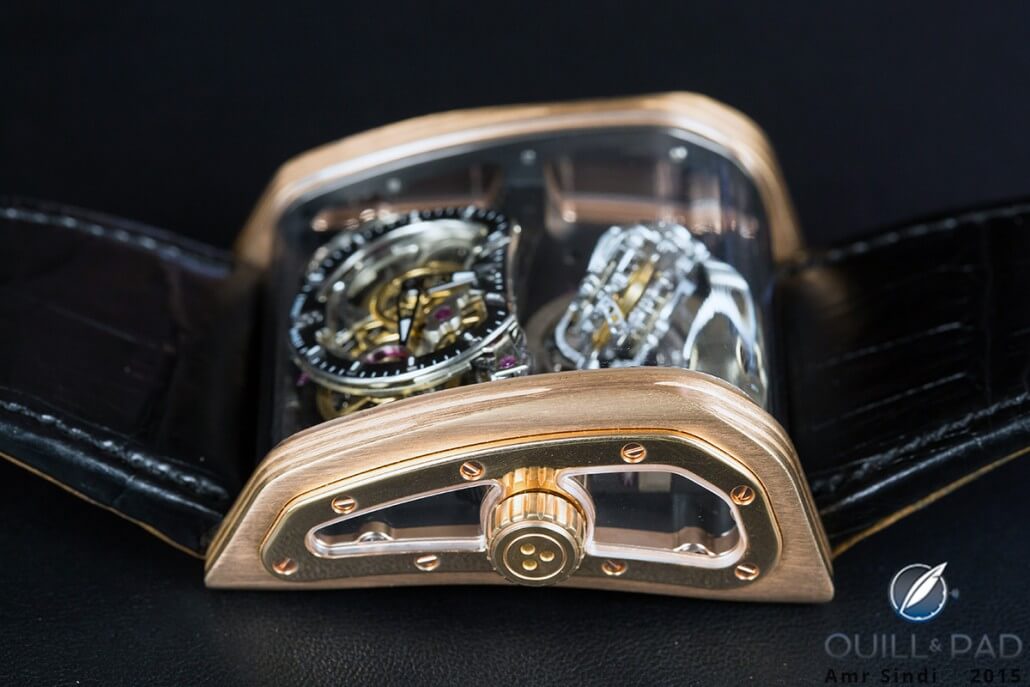
Side windows in the case band of the Cabestan Triple Axis Tourbillon allow plenty of light in for fully appreciating the movement
Outlandishly cool designs
Tucked away within Cabestan’s outlandishly cool designs are movements that are surprisingly quite traditional at heart, incorporating elements that can be found abundantly in the annals of watchmaking like the chain-and-fusée constant force mechanism that has graced every Cabestan movement to date.
However, you won’t find any space-age materials or components in a Cabestan. And according to Betoux and Coudray, that’s the way it should be. Things have to be made with future serviceability in mind and not just in the short-term, but centuries from now. Just like how today’s watchmakers can restore clocks and watches from centuries past.
A departure from Cabestan’s other creations
The Triple Axis Tourbillon represents a departure from Cabestan’s other creations to date, which have all been variations on the same base movement − not that one could call a vertically mounted caliber with a flying tourbillon and a chain-and-fusée constant force mechanism a “base” movement and really mean it.
To grasp how much of a leap this is for Cabestan, it’s important to keep the following in mind: this is the first Cabestan movement entirely conceived and developed by Eric Coudray. And if this is just a taste of things to come, I’m sure Cabestan will have no problem finding its way into the most discerning watch collectors’ collections. And judging from its number of new owners in the past year alone, this is already happening.
The movement is not vertically mounted. It has a more traditional horizontally stacked assembly using a unique, three-dimensional base plate that also makes up part of the inner case (or lugs, depending how you look at it).
It has a normal crown. Up until now all Cabestan watches have featured more interactive methods of winding and setting the watch, either by means of a foldout crown or a capstan.
Lastly, and perhaps most significantly, is that the Triple Axis Tourbillon resorts to hands and a dial to indicate the time instead of the boutique brand’s signature rotating drums.
But that’s where conventionality ends.
The Triple Axis Tourbillon’s movement is unlike anything I’ve ever seen. The three-dimensional base plate has two distinct parts: a flat section that perfectly showcases the escapement in all its glory and a sloped section housing the gear train and chain-and-fusée constant force mechanism, which are set beneath the hands and dial. The hands and dial are actually set at an angle facing the wearer for extreme legibility.
It’s fast!
The fastest triple-axis tourbillon ever made occupies a space that takes up almost half of the movement. Its three tourbillons rotate respectively at 60, 19, and 17 seconds.
Oscillating at 3 Hz (21,600 vph), this mesmerizing triple-axis tourbillon is one you could watch spinning away for hours. While I’m sure there’s some theoretical chronometric advantage to a faster revolution, the sheer sight of it in motion is enough to please the pickiest of watch lovers.
The manual-winding movement comprises a whopping 1,044 individually hand-assembled components and offers a power reserve of 50 hours.
And it’s not just the movement that’s mind-blowing.
Inspired by a catamaran
The Triple Axis Tourbillon’s entire construction is so unique, I couldn’t even tell you where the case ends and where the sapphire crystal begins. Inspired by the form of a catamaran (after all, Cabestan’s very name, which means winch, hints at its nautical inspiration), the case is composed of a central sapphire crystal element housing the movement encapsulated by two metal end pieces on the sides.
The movement’s base plate attaches to these lateral plaques, which are available in pink gold, white gold, titanium, and black titanium – well, you name it. The two cutouts on each side allow a side-on view of the escapement as well as the chain and fusée system.
It’s hard to see in the completed case, but rest assured this isn’t a curved or domed sapphire crystal, but rather an actual glass tube. Sapphire crystal is a punishingly difficult material to work with, and such an element can only be tooled and finished by hand.
Needless to say, this is one very, very expensive piece of “glass.”
The case itself is 50.25 mm wide by 45.5 mm long and 22.3 mm at its thickest. While it does sit high on the wrist, the absence of lugs and the overall transparency make it far more wearable than what you might expect from such a nonconformist piece of watchmaking.
The Cabestan Triple Axis Tourbillon is proof positive that an independent brand can still push boundaries. And with a retail price of 250,000 Swiss francs, I dare say that it’s actually a bargain compared to other watches with similar (but less spectacular) escapements.
Please note that the watch photographed in this review is a fully functioning prototype without the proper finishing and decoration.
For more information, please visit www.cabestan.ch/triple-axis-tourbillon.
Quick Facts
Case: 50.25 x 45.5 x 22.3 mm, pink gold, white gold, titanium, or black titanium
Movement: manually wound Caliber CAB EC 17 with triple-axis flying tourbillon and chain-and-fusée constant force escapement
Functions: hours, minutes
Price: 250,000 Swiss francs
Leave a Reply
Want to join the discussion?Feel free to contribute!

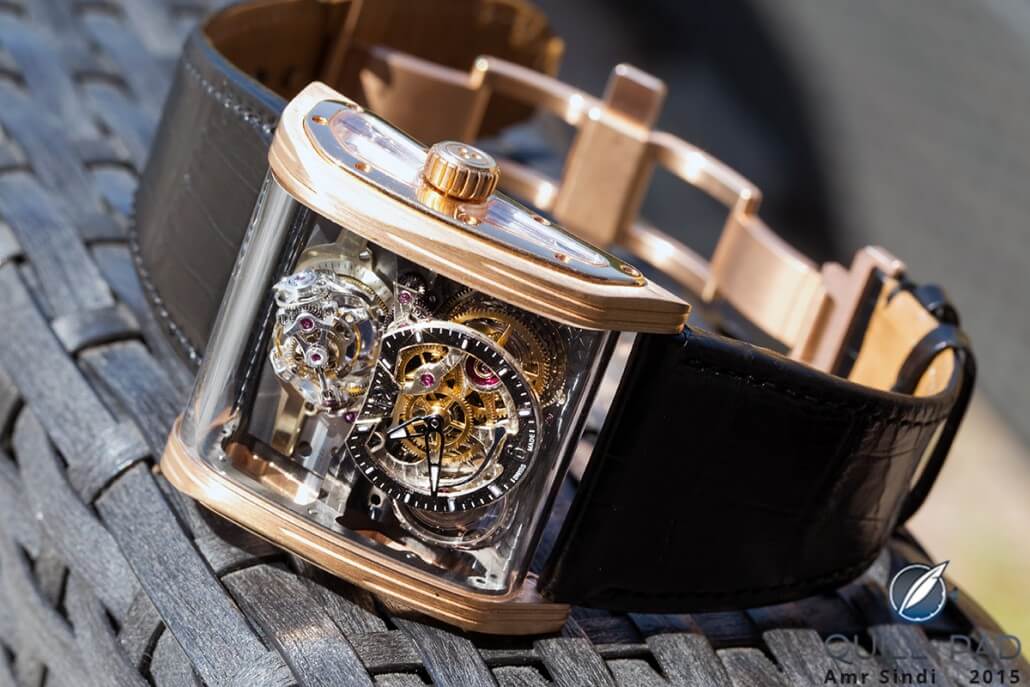
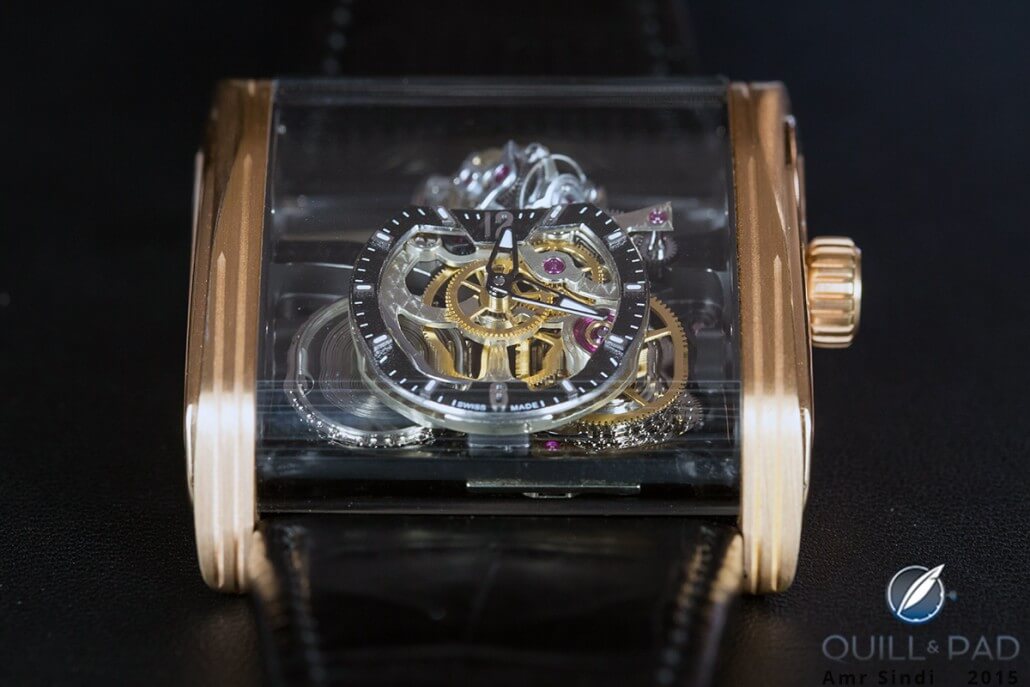
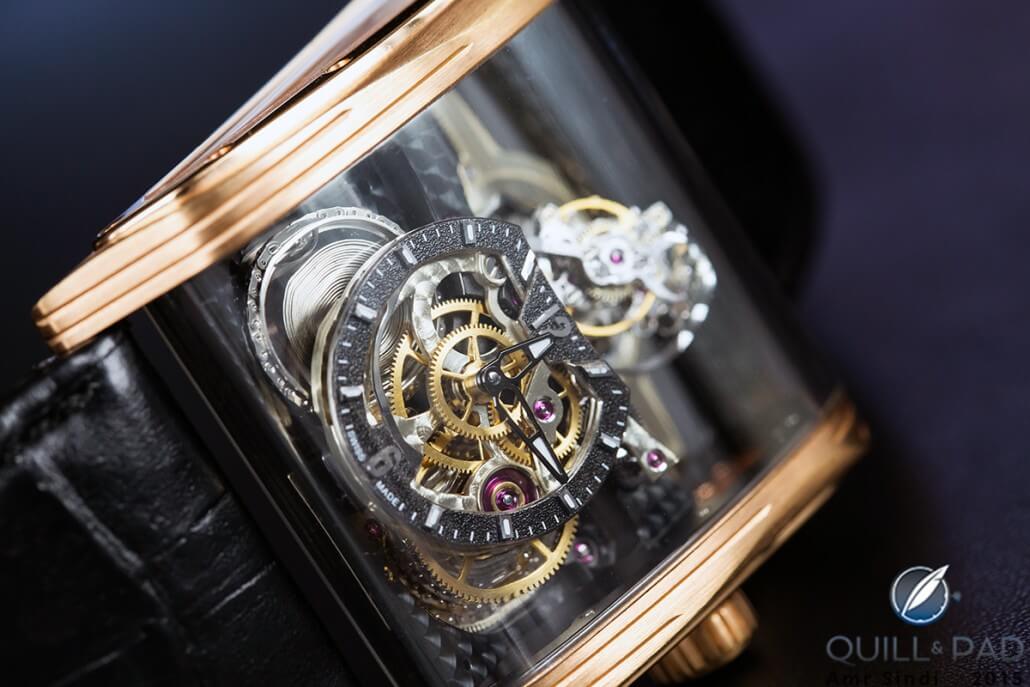
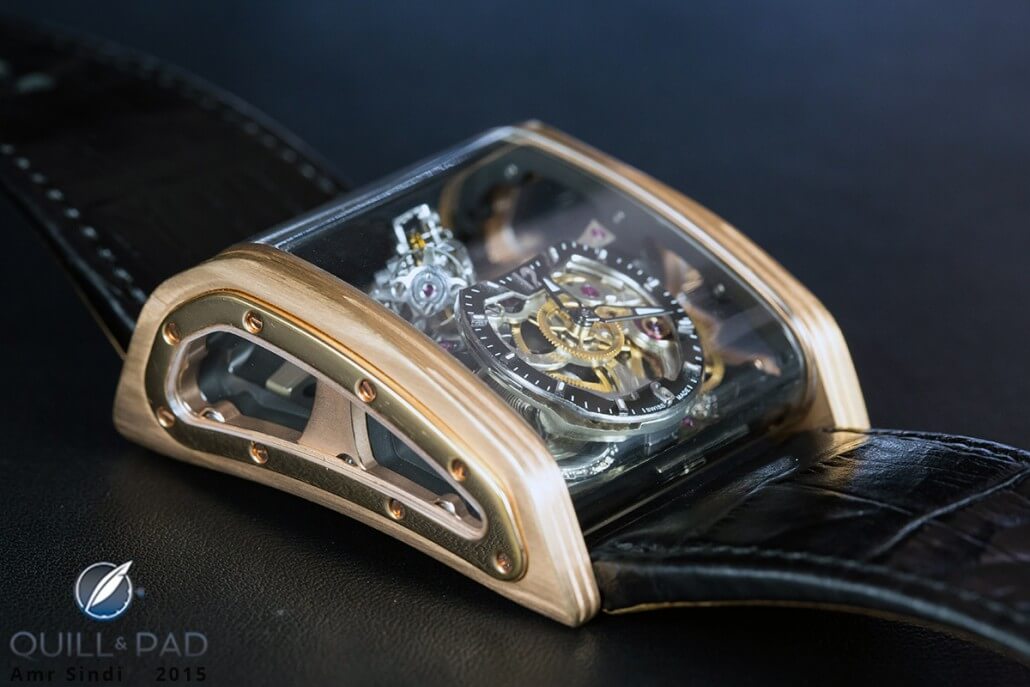
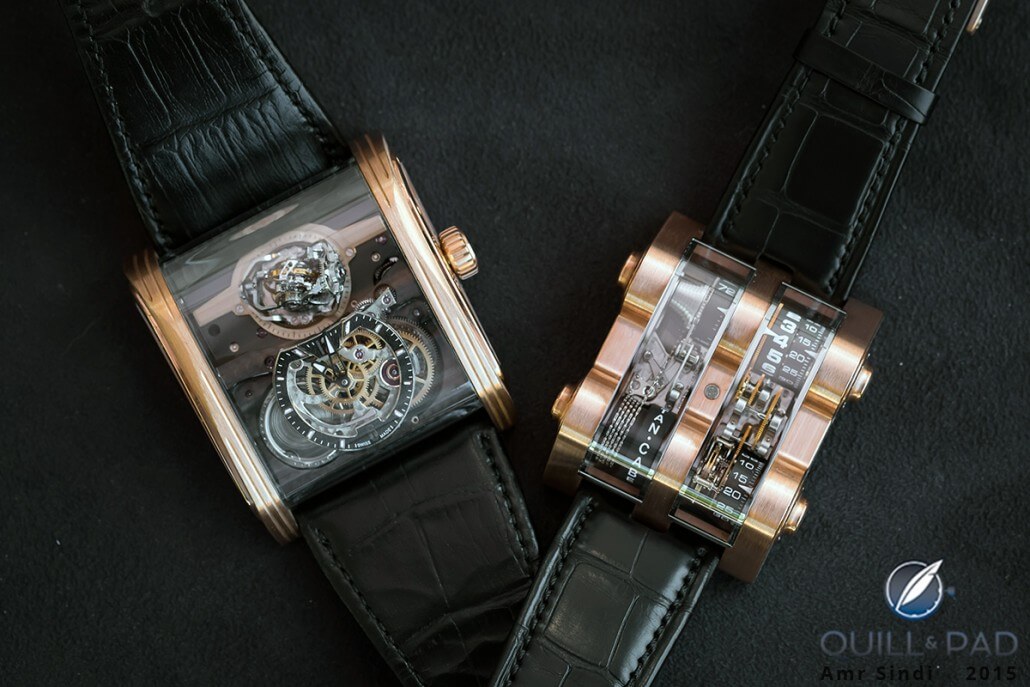
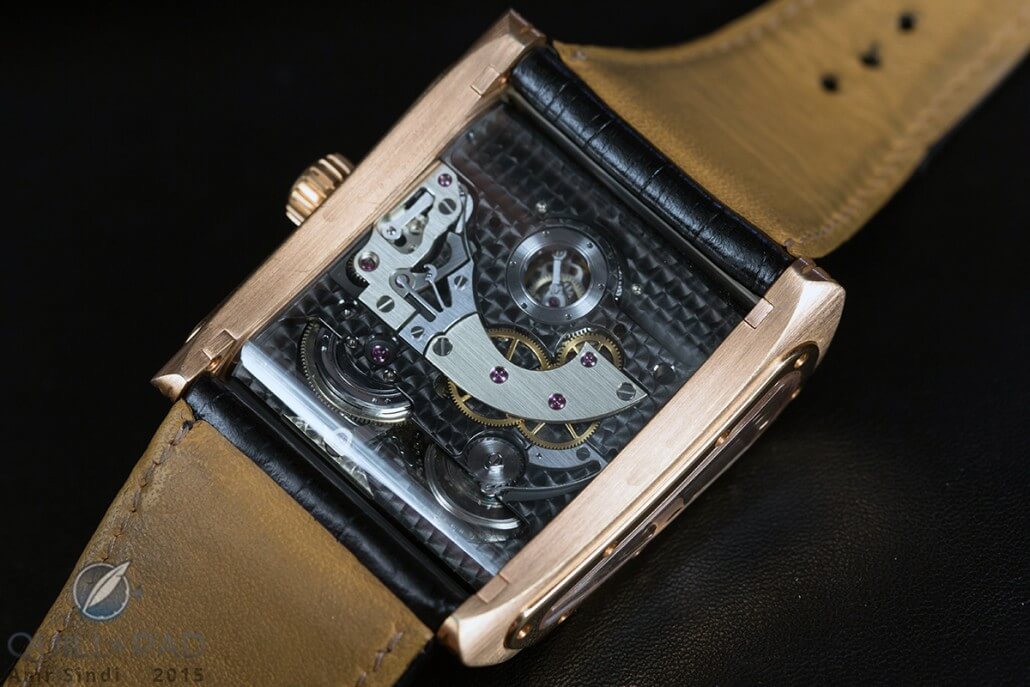
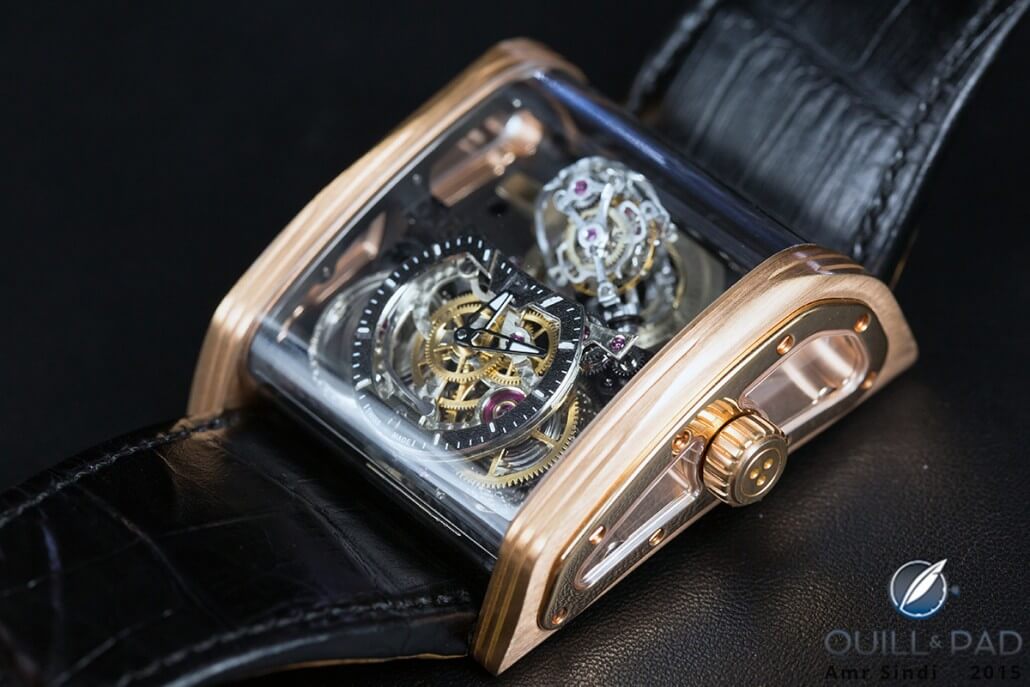
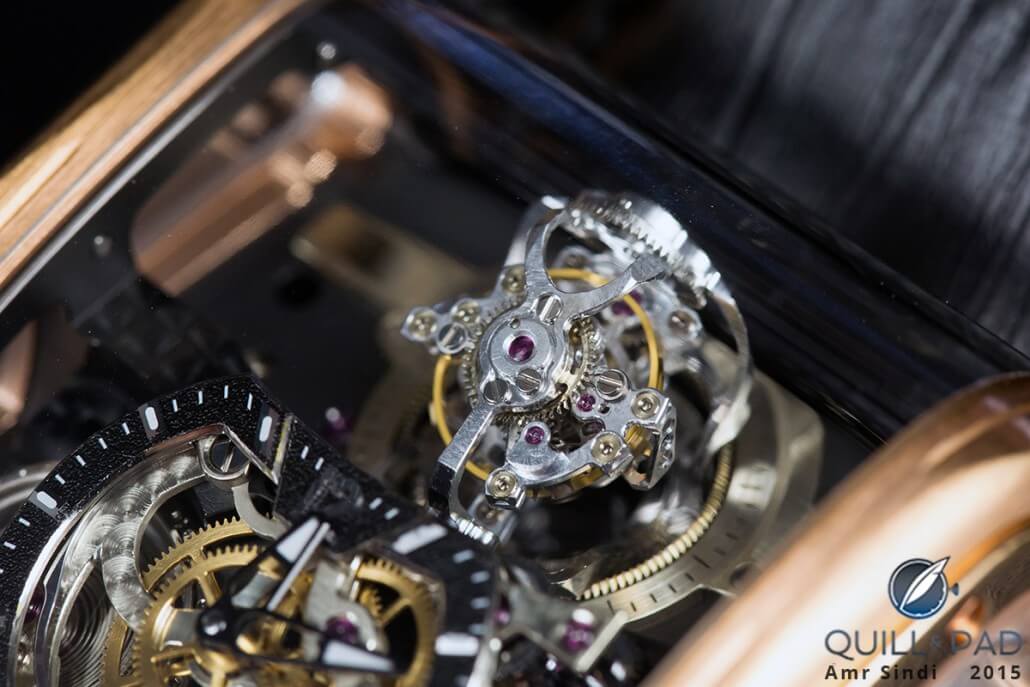
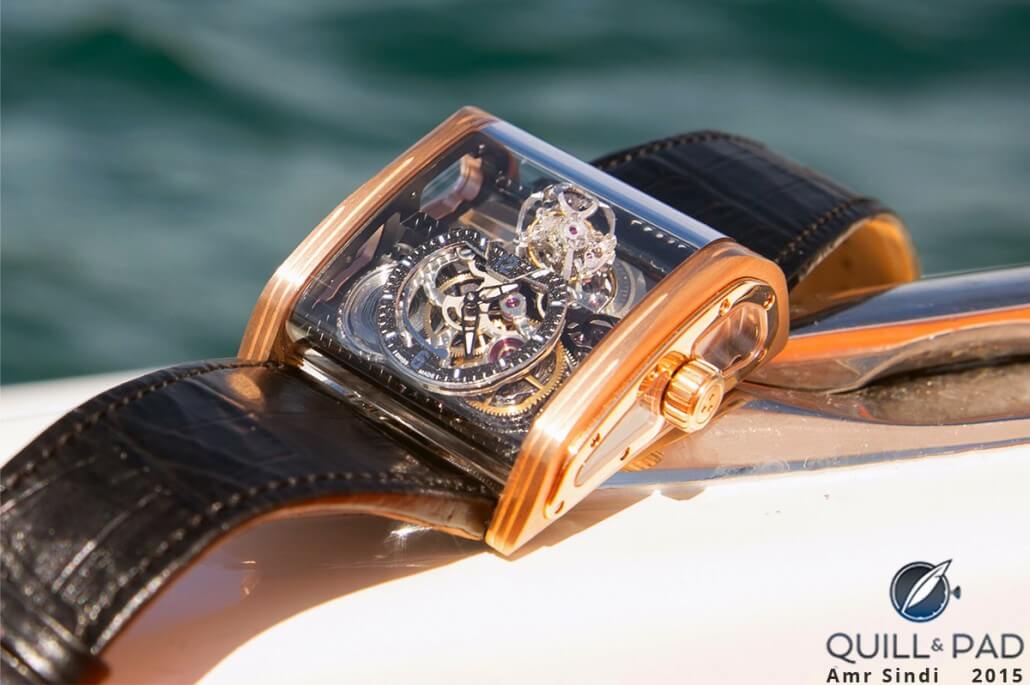
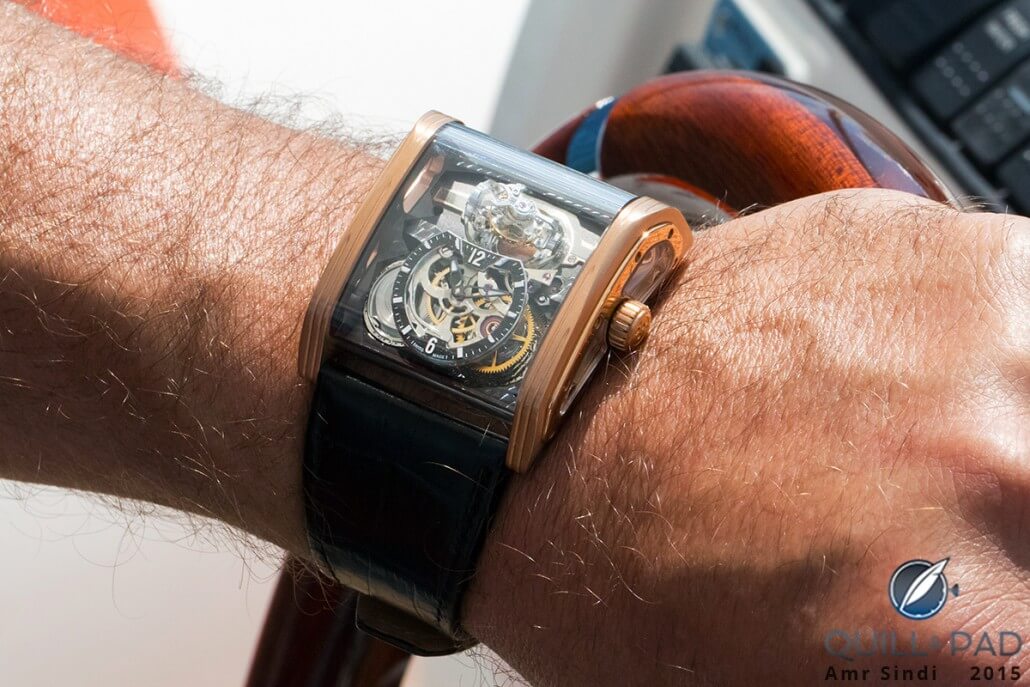
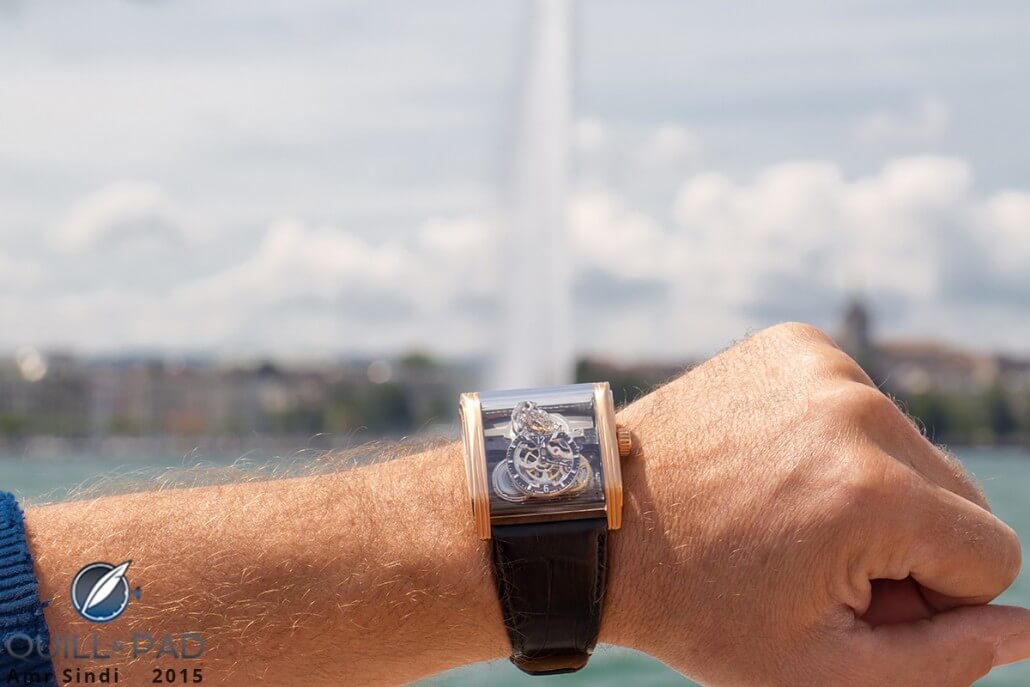
Loved the write up. Cheers